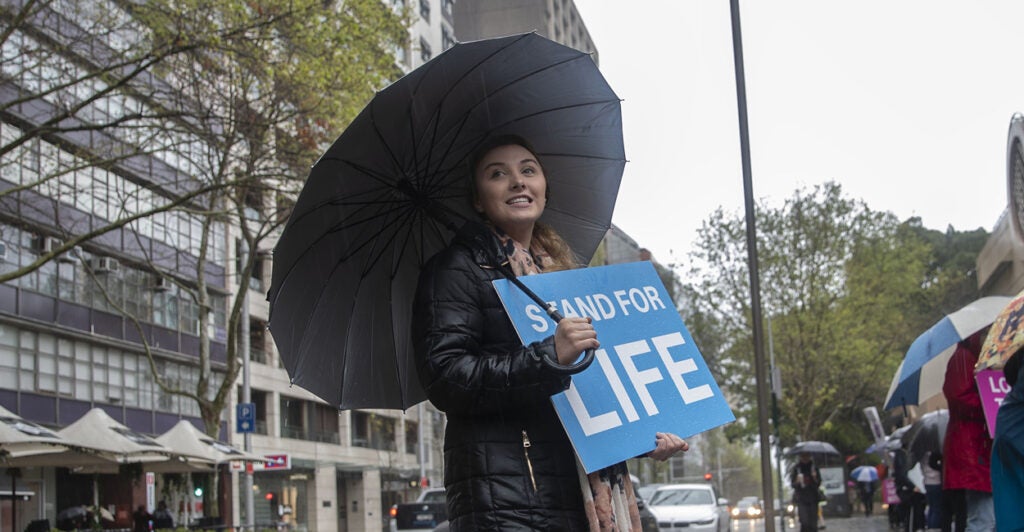In 1983, the last effort by pro-life forces to pass federal legislation providing full protection for the unborn failed on the floor of the U.S. Senate. Stunned by this defeat after a decade of grassroots mobilization, the pro-life movement turned in new directions. The most momentous of these was a campaign of support for mothers and babies, led by pregnancy care services and policymakers allied with them.
An argument can be made that, in terms of services and policies, America was not ready for the reversal of Roe v. Wade in 1983. Today, on the threshold of the Supreme Court itself reversing Roe v. Wade, America is much closer to readiness.
If this article catalogued all the policy initiatives that have occurred and expanded over the past four decades, it would run to dozens of pages and involve all 50 states and territories.
The list precedes Roe v. Wade but has grown in scope and now covers not only health insurance and income support, but grassroots (and largely free) pregnancy services, tax relief for families and children, adoption and charitable donation credits, programs to deal with sex trafficking, fatherhood programs, maternity homes, job training, addiction care, and much more besides.
The extent of these changes and the number of women affected are impressive. In 1965, Congress enacted the Medicaid and Medicare programs, covering maternity care through a federal-state partnership for millions of poor women. The program needs a variety of reforms and better financial management, but its scope is undeniable, reaching 42% of all women and more than 50% in states like Texas and Mississippi.
In the 1980s, explosive growth occurred in pregnancy help centers, founded and supported by citizen groups and churches. Three major networks grew rapidly—Heartbeat International, Care Net, and the National Institute of Family and Life Advocates.
The centers increasingly medicalized, augmenting material support and counseling, and now the centers employ, as paid staff or volunteers, more than 10,200 licensed health care professionals nationwide. Some 3,000 sites, including brick-and-mortar locations and mobile units, reach 2 million people per year, with extremely high satisfaction rates.
Under the first Bush administration, pro-life leaders, including National Commission on Children Co-Chair Kay Coles James, helped spearhead the fight for a federal child tax credit available to all income-tax paying families.
Despite initial legislative defeat in the House, those leaders persuaded the new Republican Congress under Speaker Newt Gingrich to include a $500 per child tax credit for working families as the “crown jewel” of his Contract with America. Since its enactment, the law has literally returned trillions of dollars to families to invest in their children.
Not long after, pro-life groups were key to the enactment of federal and state adoption tax credits. These benefits were designed to recognize and defray the high cost of adoption and make it more affordable for low- and middle-income families.
The credits are also designed to reduce the cost of extended foster care to the states. Today some states, like Florida, are providing additional benefits, like free state university and community college tuition, to adopted children. The maximum federal credit is now $14,400.
But wait, there’s more. While most pregnancy center work remains privately funded, centers across the nation increasingly benefit from state-funded programs loosely grouped under the category A2A, alternatives to abortion.
These projects, now found in 14 states, help fund pregnancy assistance that goes beyond the calendar of immediate needs centers originally addressed. They recognize that pregnancy is a life-altering experience and that maternal and family needs do not end at birth.
The projects, even those that reject government funding on principle or because of the centrality of their religious mission, face sharp criticism from legal abortion advocates, but they carry on, providing residential and job preparation services to women who reject abortion as a solution.
Today, the National Maternity Housing Coalition includes dozens of residences nationwide affiliated through Heartbeat International, which works with its own network of more than 3,000 pregnancy help centers in 971 locations worldwide. These groups realize that hundreds of thousands of women remain to be reached in the United States alone, and they are in it for the long haul.
Affiliates of the National Maternity Housing Coalition need not be religious, but they are required to adhere to the Commitment of Care and Competence, which establishes standards of excellence and truthfulness in this lifesaving and Christ-centered work.
Increasingly, in the potential wake of a reversal of Roe v. Wade, pro-life states are updating their policies, securing new funding streams for pregnancy centers, and seeking to address maternity care deserts within their borders.
Forty years ago, the pro-life movement endured major defeat in Congress. Today it is winning triumph after triumph, saving life after life, all across the nation, with a focus on providing life-affirming choices and support to the incredible women we call “mom.”
The Daily Signal publishes a variety of perspectives. Nothing written here is to be construed as representing the views of The Heritage Foundation.
Have an opinion about this article? To sound off, please email letters@DailySignal.com and we’ll consider publishing your edited remarks in our regular “We Hear You” feature. Remember to include the URL or headline of the article plus your name and town and/or state.
